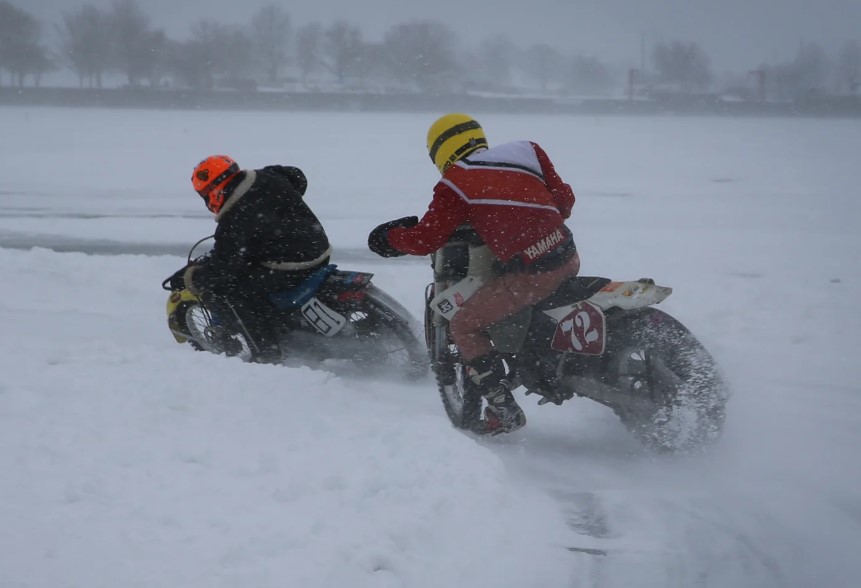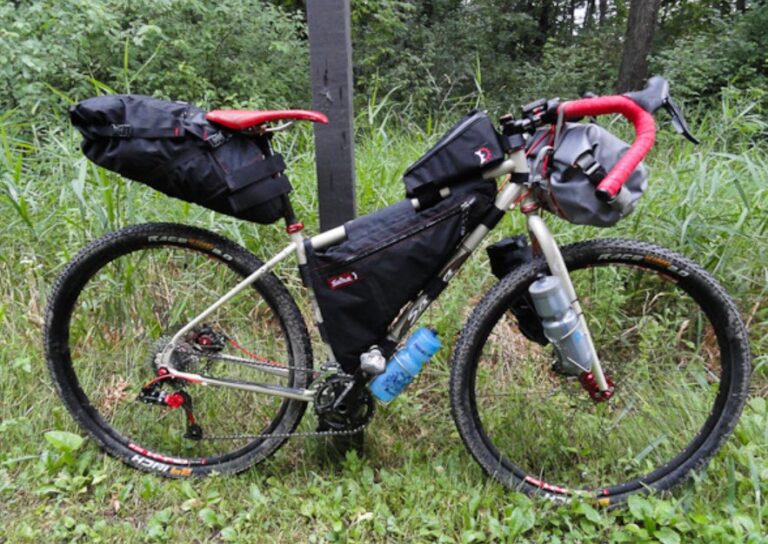How To Winterize A Dirt Bike? All You Need To Know
As the cold season approaches, How To Winterize A Dirt Bike? becomes a crucial question for enthusiasts keen on maintaining their bikes in top-notch condition. Winterizing your dirt bike ensures it survives the harsh winter months unscathed, ready to roar back to life come spring. With proper preparation, you can protect your investment and avoid unnecessary repairs or performance issues.
Key Takeaways
- Properly clean and lubricate the bike before storage.
- Drain or stabilize the fuel to prevent degradation.
- Charge and disconnect the battery to extend its life.
- Store the bike in a dry, cool place and cover it to protect against dust and moisture.
- Check tire pressure and elevate the bike to prevent flat spots.
How To Winterize A Dirt Bike?
To winterize a dirt bike, you need to prepare it for a long rest during the cold months. This means cleaning the bike thoroughly, changing the oil, adding a fuel stabilizer, charging the battery, and storing the bike in a dry place.
Doing these steps keeps your bike safe from damage caused by cold and unused time, like rust or a dead battery. It’s like making sure your bike has a cozy blanket and a warm bed for the winter, so it wakes up happy and ready for adventures when spring comes.

Preparing Your Dirt Bike for Winter
Cleaning and Lubrication
The first step in winterizing your dirt bike involves giving it a thorough clean. Dirt, mud, and debris can cause corrosion if left unchecked, especially in the damp conditions of winter.
Use a mild soap and water to cleanse every nook and cranny, ensuring the bike is dry before proceeding. After cleaning, lubricate the chain, control cables, and all moving parts to prevent rust and ensure smooth operation after winter.
Fuel System Maintenance
For the fuel system, options vary between draining the tank completely or using a fuel stabilizer. Draining helps avoid issues related to old gas, but if you prefer to leave fuel in, add a stabilizer to prevent the fuel from degrading and clogging the carburetor or fuel injectors. Run the engine for a few minutes after adding the stabilizer to ensure it circulates through the system.
Battery Care
Charging and Storage
The battery requires special attention during winter storage. A battery left connected and unused can discharge and potentially freeze, causing irreparable damage. Charge the battery fully, then disconnect it and store it in a cool, dry place. Consider using a trickle charger to maintain the charge without overcharging.
Inspection and Maintenance
Before storage, inspect the battery for any signs of wear or damage. Check the terminals for corrosion and clean them if necessary. Ensure the battery is stored away from direct heat sources and inspect it periodically throughout the winter.
Tire Preservation
Pressure and Storage
Tire care is essential to avoid flat spots and cracking. Inflate the tires to the recommended pressure, then consider elevating the bike off the ground using a stand. This reduces pressure on the tires and suspension, preserving their shape and functionality.
Environmental Considerations
Store your bike in a cool, dry place away from sunlight. Sun exposure can cause tire degradation over time. If elevating the bike is not an option, rotate the tires periodically to prevent flat spots.
Engine and Exhaust Protection

Oil Change and Antifreeze
Changing the oil and filter before storage is advisable to remove contaminants that can degrade engine components. If your dirt bike is liquid-cooled, check the antifreeze level and quality to ensure protection against freezing temperatures.
Exhaust System Care
Moisture can accumulate in the exhaust system and cause rust. To prevent this, consider spraying light oil into the exhaust ports and covering the exhaust outlet to keep moisture out.
Storage Location and Conditions
Choosing the Right Spot
The storage location can significantly impact your dirt bike’s condition over winter. A dry, temperature-controlled environment is ideal to prevent moisture accumulation and temperature fluctuations that can cause damage.
Covering and Securing
Cover your bike with a breathable cover to protect it from dust and moisture while allowing air circulation. Ensure the cover fits snugly to prevent it from trapping moisture underneath, which could lead to corrosion.
Preparing for Spring
Recommissioning Your Dirt Bike
As winter fades and riding season approaches, preparing your bike for action is just as important as winterizing it. Check all systems thoroughly, replace the fluids, and ensure everything is lubricated and adjusted correctly before hitting the trails again.
Safety Checks
Perform a comprehensive safety check, including brakes, suspension, and controls, to ensure your dirt bike is safe and ready for the challenges ahead.
Alternative Winterization Tips

Using Silica Gel Packs
Storing your dirt bike in a place where moisture can accumulate may lead to corrosion and rust. An effective alternative to combat this issue is using silica gel packs.
Placing these packs around your bike, especially near metal parts, can absorb any excess moisture in the air, keeping the bike dry and rust-free. This method is particularly useful in areas with high humidity or if your storage location is prone to dampness.
Fogging the Engine
For long-term storage, another method to protect the engine’s internal parts from rust and corrosion is fogging. This involves spraying fogging oil into the air intake and spark plug holes while the engine is running and then briefly after shutting it off.
The oil coats the internal components, providing a protective layer that prevents moisture from causing damage. This is especially recommended for bikes that will be stored for several months without use.
Regular Check-ups During Storage
Battery Maintenance
Even if you’ve disconnected and stored the battery properly, it’s crucial to check it regularly. A monthly check to ensure the battery is holding a charge and topping it up with a trickle charger if necessary can extend its life. This proactive approach prevents the battery from discharging completely, which could lead to a reduced lifespan.
Tire Checks
Similarly, if you’ve stored your dirt bike with the tires on the ground, it’s wise to check the pressure monthly. Maintaining the correct pressure and adjusting it if necessary can prevent flat spots. Rotating the tires if the bike isn’t elevated is also a good practice to ensure even pressure distribution.
Spring Readiness
Thorough Inspection
Before the riding season begins, a thorough inspection of your dirt bike is necessary. This includes checking the tire pressure, battery charge, and fluid levels, and ensuring all moving parts are well-lubricated. A detailed inspection ensures any issues that might have arisen during storage are addressed before you ride.
Test Run
Perform a test run in a safe area to ensure everything is working as it should. Listen for any unusual noises and pay attention to the bike’s handling and performance. This initial run is crucial for spotting any potential issues that need fixing after winter storage.
Conclusion
Winterizing your dirt bike is a critical process to maintain its performance and longevity. By following these detailed steps, you’re not only protecting your investment but also ensuring that your bike will be ready and reliable for the next riding season. With care and attention, your dirt bike can weather the winter months and emerge ready for the adventures that await.
Frequently Asked Questions
How often should I check on my dirt bike during winter storage?
It’s advisable to check on your dirt bike at least once a month during storage. This regular inspection should include checking the battery’s charge, tire pressures, and any signs of rust or corrosion. Regular checks help address issues before they become significant problems.
Can I use regular motor oil for fogging the engine?
No, regular motor oil is not recommended for fogging the engine. Fogging oil is specifically designed to protect the engine’s internal surfaces during storage. It has properties that allow it to cling to engine parts better than standard motor oil, providing superior protection against corrosion.
Is it necessary to change the oil before storing the bike if I barely rode it during the season?
Yes, it’s recommended to change the oil even if the bike saw minimal use during the riding season. Used oil can contain contaminants and acids that could harm the engine during storage. Fresh oil provides better protection against corrosion.
What’s the best way to elevate my dirt bike for storage?
The best way to elevate your dirt bike is by using a dedicated motorcycle stand or lift. This ensures the bike is securely lifted off the ground, reducing pressure on the tires and suspension. Make sure the stand is stable and that the bike is securely positioned to prevent any accidental falls.
Can I store my dirt bike outside if I cover it properly?
Storing your dirt bike outside is not recommended, even with a cover. Outdoor elements like moisture, temperature fluctuations, and sunlight can still harm the bike. If indoor storage isn’t an option, ensure the bike is covered with a high-quality, waterproof, and breathable cover and placed in the most sheltered location possible.

Welcome to the exhilarating world of Matt Rex, a professional car racer turned renowned vehicle enthusiast. Immerse yourself in his captivating blog as he shares heart-pounding adventures, expert reviews, and valuable insights on cars, trucks, jets, and more. Fuel your passion for speed and discover the beauty of vehicles through Matt’s engaging stories and meticulous expertise. Join the ever-growing community of enthusiasts who find inspiration and expert advice in Matt Rex’s blog—a digital hub where the thrill of speed meets the pursuit of knowledge.






![Kawasaki Engine Surges At Full Throttle [All Reasons]](https://www.turbochaos.com/wp-content/uploads/2023/11/Kawasaki-Engine-Surges-At-Full-Throttle-768x578.jpg)
